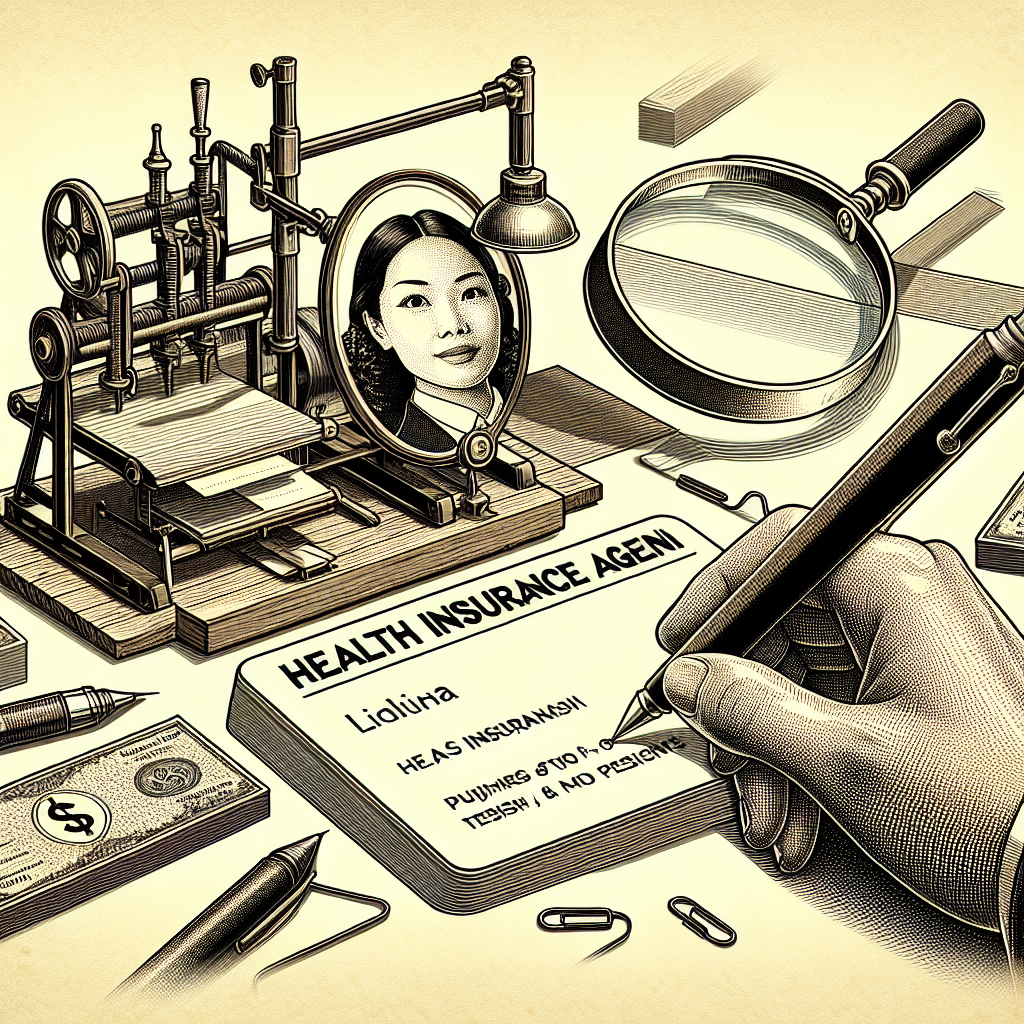Filed under Health Insurance on
Designing Effective Business Cards for Health Insurance Agents

In the competitive world of health insurance, standing out is crucial. A well-designed business card can serve as a powerful marketing tool for health insurance agents, ensuring that clients remember you long after your initial meeting. Crafting the perfect business card requires attention to detail and strategic consideration. This article delves into the essential elements of designing effective business cards for health insurance agents, providing not only industry insights but also actionable advice to bolster your brand presence.
Understanding the Importance of Business Cards in Health Insurance
Business cards are often the first tangible interaction potential clients have with you as a health insurance agent. They are a physical representation of your personal brand and professional identity. Despite the digital age, the impact of a well-conceived business card remains significant. A thoughtfully designed card can convey credibility, communicate essential information, and leave a lasting impression.
The Role of First Impressions
First impressions matter greatly in the health insurance sector. As a professional, your business card is an extension of your verbal introduction. A visually appealing and informative card can instill confidence in potential clients and partners, setting the stage for productive professional relationships.
The Need for Tangible Marketing Tools
Even as digital communication prevails, the tangibility of business cards holds unique value. They offer something a website or an email signature cannot provide—a personal touch. In networking environments, business cards seamlessly facilitate interactions, ensuring that the health insurance agent and their services remain top-of-mind.
Key Elements of a Successful Business Card Design
Designing effective business cards for health insurance agents involves marrying aesthetics with functionality. Here are the critical components to consider:
Information Clarity
- Name and Title: Clearly display your full name with your official title as a health insurance agent. This establishes your authority and domain expertise.
- Contact Information: Provide multiple contact options such as phone number, email, and address. Accessibility can make or break potential deals.
- Company Logo and Branding: Align your business card’s design with your company’s branding for consistency and professionalism.
Design Elements
- Color Scheme: Choose a color palette that aligns with both your personal branding and the emotional tone you want to set. Blues and greens often convey trust and reliability in insurance.
- Typography: Select fonts that are both professional and readable. Avoid script fonts that could be hard to decipher at a glance.
- Whitespace Utilization: Don’t overcrowd the card. Strategic use of whitespace can highlight key information and make the card more inviting to read.
Incorporating Professionalism with Creativity
While maintaining a professional demeanor is essential, integrating creativity can enhance a business card’s appeal. Striking the right balance between professionalism and creativity can make your business cards unforgettable.
Personalization Tips
- Unique Taglines: Incorporate a catchy, yet professional tagline that speaks to your expertise or the unique value proposition you offer as a health insurance agent.
- Readable QR Codes: Include a QR code that directs clients to your professional website or LinkedIn profile. Ensure it is functional and enhances rather than overwhelms the card.
Innovative Materials
Utilizing unique materials can distinguish your business cards. Consider options like textured finishes, recycled paper for an eco-friendly statement, or even metal for luxury and durability. These innovations can start conversations and solidify lasting impressions.
Industry Trends in Business Card Design for Insurance Agents
Staying abreast of industry trends can provide an edge in designing effective business cards for health insurance agents. Here are notable trends to consider incorporating:
Minimalist Designs
The minimalist movement has permeated business card design, emphasizing simplicity and elegance. Focus on essential elements, using clean lines and ample whitespace to convey a sense of sophistication and clarity.
Interactive Features
Business cards with augmented reality (AR) features or embedded NFC (Near Field Communication) chips can make your card interactive. Clients can hover their smartphones over the card to access multimedia content about your services, rendering your introduction even more engaging.
Sustainability Focus
Eco-friendliness is more than just a buzzword; it is a growing requirement for many businesses. Choosing recycled materials for your cards or using vegetable-based inks can resonate positively with environmentally conscious clients.
Final Thoughts
Designing effective business cards for health insurance agents demands a careful blend of creativity, professionalism, and strategic thinking. By focusing on critical design elements, staying informed about industry trends, and injecting a personal touch, you can create business cards that not only communicate your brand message but also leave a lasting impression with clients and colleagues alike. Remember, in the world of health insurance, your business card is more than just contact information; it is a representation of your commitment to service and excellence.





